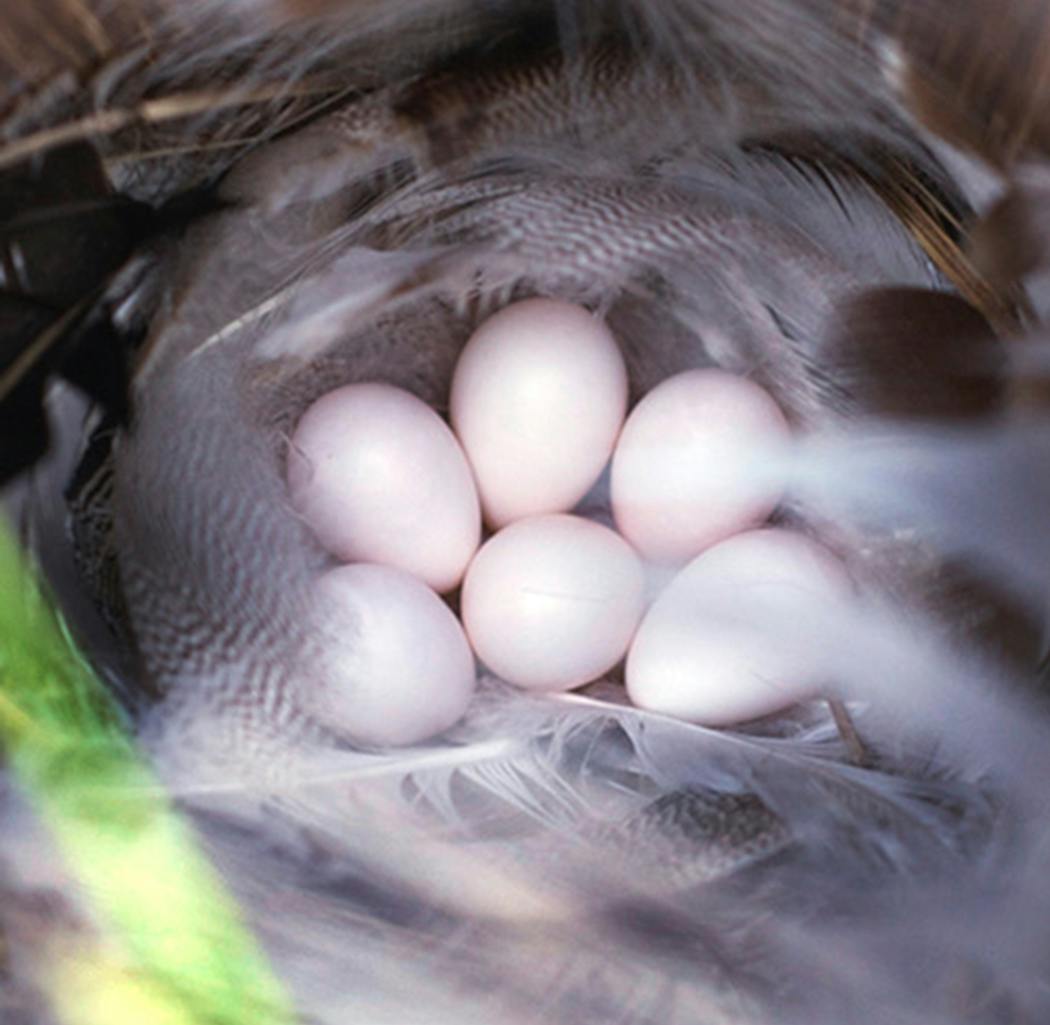Birds have evolved to fit particular environments. Eggs have evolved along with the birds. The eggs that birds will lay this spring will vary in shape and color to facilitate successful hatching in a world of varying conditions.
First, a parlor trick. Hold a chicken egg between your palms and push hard against the long ends of the egg. Try to crush it. If you do this correctly, you can't crush it. If you end up with yolk on your hands either you took this too seriously or didn't follow directions.
Shape contributes to egg strength, a reason for the typical shape. A nest is a place of activity, brooding birds coming and going, parents rotating and shifting eggs. Eggs need to be strong.
Birds building nests with a center cup, a depression to hold the eggs, can lay eggs with ends gently oval. Ditto birds that nest in cavities. Eggs are unlikely to roll out of those nests.
Some species of seabirds nest on cliffs, using no more than a narrow shelf of rock on a sheer face. Those birds lay eggs that pivot on a smaller, pointed end. They might roll, but not far.
We don't know the shape of the first or early bird eggs. But at some point there was a pointed egg that pivoted when moved, benefit of a genetic mutation.
Robert Zink, an ornithologist, was at the University of Minnesota for many years. He now is a professor in the School of Natural Resources and School of Biological Sciences at the University of Nebraska, Omaha, and curator of the University of Nebraska State Museum.
He also is a friend who helps me with things I don't understand.
"Mutation of a genetic code is passed to future generations if it contributes to the ongoing success of the species," Zink explained.
A mutation can be helpful, harmful, or neutral. If not too harmful, it is retained and passed on, he wrote.
Egg sizes
The size difference in bird eggs is not complicated. Basically, smaller birds lay smaller eggs, bigger birds bigger eggs. Eggs of precocial birds, those up and running minutes after hatching (ducks, game birds, shorebirds), tend to be larger than those of altricial birds (songbirds, raptors), those nestlings arriving featherless with closed eyes.
The larger eggs contains more yolk, fueling the advanced development of those chicks.
Why do eggs vary in color? Why are the eggs of American robins, for instance, that unmarked shade of blue? Why are killdeer eggs so heavily marked, black on tan?
Color and pattern developed as protection, determined by the location of the nest. Eggs that are not readily exposed to view — the view of predators — tend to be pale, a solid color, no camouflage needed. Woodpeckers, eggs hidden in a hole, have pale, unmarked eggs.
Those killdeer eggs, however, completely exposed on the gravel of a shoreline or your driveway, are heavily speckled with dark markings.
These eggs are so well camouflaged that you might not see them even after flushing the brooding bird and looking at the spot from which it flew. This protects the eggs of this species and others that similarly build exposed nests.
Egg markings vary by species and also from female to female, each individual laying eggs with unique markings. In colonies (gulls, terns and pelicans in Minnesota), where many birds nest tightly together, brooding birds can recognize the random marks on their eggs from among the thousands.
Now, are you going to try that egg trick?
Lifelong birder Jim Williams can be reached at woodduck38@gmail.com. Join his conversation about birds at startribune.com/wingnut.
Blue egg layers
So why are robin's eggs blue? Bile pigment deposited as the egg is formed causes blue tones in their eggs. Brighter, more colorful eggs can be a sign of good health and diet for the mother bird.
Robins aren't the only layers of blue eggs. Eastern bluebirds may lay light blue or whitish eggs. Blue jay eggs are pale green-blue with dark spots. House finches lay eggs that are bluish-green. Red-winged blackbirds lay pale blue-green to gray eggs with black or brown markings in their marsh nests. Other local nesters with some blue-tinted eggs include house finches and gray catbirds.
Sources: The Spruce, Sialis and Cornell Lab of Ornithology.
Singing, ceremonies and straw hats: Olympics opening ceremony in Tahiti centers Polynesian culture

Three 101-year-old friends recall fond memories in 1940s Alexandria
Celine Dion makes musical comeback at Paris Olympics with Eiffel Tower serenade





